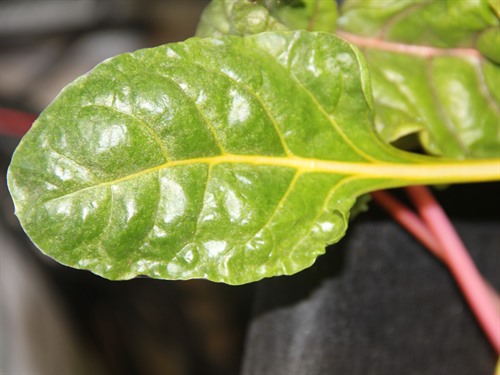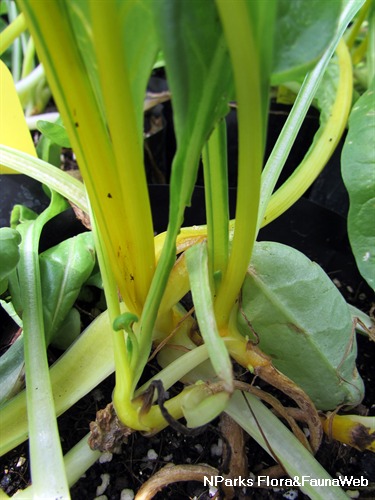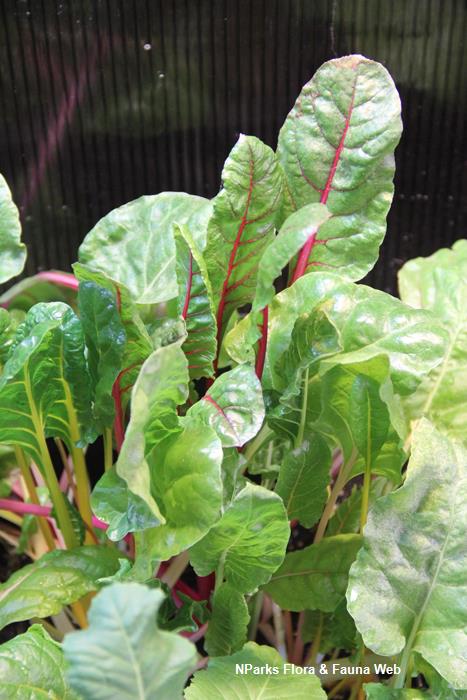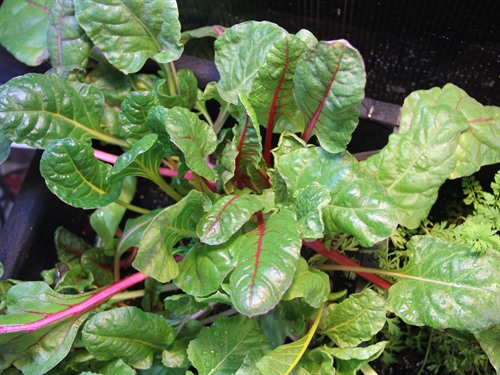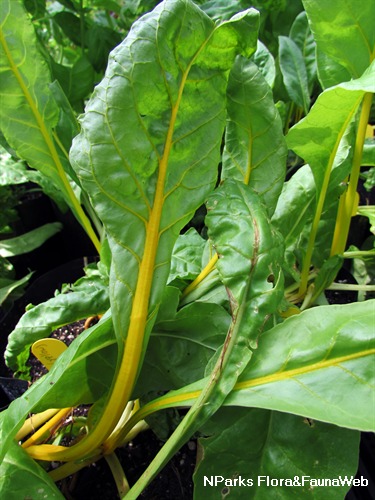
Back
Beta vulgaris Leaf Beet Group
| Family Name: | Amaranthaceae |
| Common Name: | Leaf Beet, Chard, Swiss Chard, 君达菜 |
Name
Classifications and Characteristics
| Plant Division | Angiosperms (Flowering Seed Plants) (Dicotyledon) |
|---|---|
| Plant Growth Form | Herbaceous Plant |
| Lifespan (in Singapore) | Biennial, Semi-Annual / Annual-Like |
Biogeography
| Native Distribution | Europe |
|---|---|
| Native Habitat | Terrestrial |
| Preferred Climate Zone | Sub-Tropical / Monsoonal, Temperate |
| Local Conservation Status | Non-native |
Description and Ethnobotany
| Growth Form | It is a leafy herbaceous plant that grows about 0.3 - 0.5 m tall. |
|---|---|
| Foliage | Its leaves are ovate to wedge-shaped with long petioles. |
| Flowers | Its flowers are borne in long spikes. The individual flower is small and greenish. |
| Cultivation | Chard is a biennial plant, but is usually harvested in the first year before the flowers occur . |
| Ethnobotanical Uses | Edible Plant Parts : Edible Leaves Food (Fruit or Vegetable): Its leaf blades and the midribs are rich in nutrition. Yong leaves are used in salads while the mature ones are usually cooked. |
Landscaping Features
| Landscape Uses | Container Planting |
|---|---|
| Thematic Landscaping | Economic Garden |
Plant Care and Propagation
| Light Preference | Semi-Shade |
|---|---|
| Water Preference | Lots of Water |
| Plant Growth Rate | Fast |
| Rootzone Tolerance | Moist Soils, Well-Drained Soils, Fertile Loamy Soils |
| Pest(s) | Chewing Insects, Sucking Insects |
| Propagation Method | Seed |
Foliar
| Mature Foliage Colour(s) | Green, Green - Light Green, Yellow / Golden |
|---|
Floral (Angiosperm)
| Flower Colour(s) | Green |
|---|---|
| Flower Grouping | Cluster / Inflorescence |
Image Repository
Others
| Master ID | 32365 |
|---|---|
| Species ID | 6776 |
| Flora Disclaimer | The information in this website has been compiled from reliable sources, such as reference works on medicinal plants. It is not a substitute for medical advice or treatment and NParks does not purport to provide any medical advice. Readers should always consult his/her physician before using or consuming a plant for medicinal purposes. |

